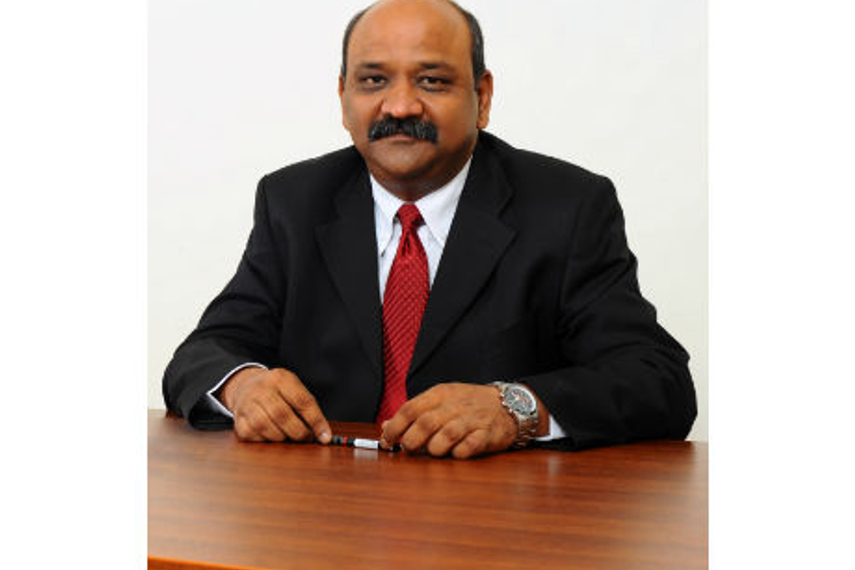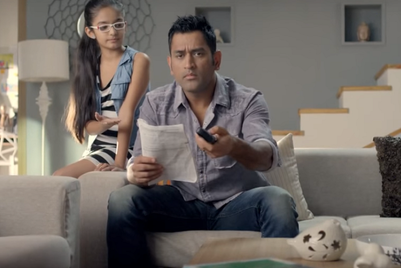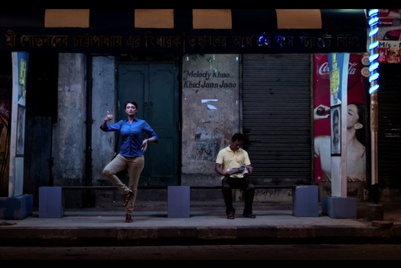
CK Birla Group company Orient Electricals has recently overhauled its look and feel, and portfolio, and now goes by the new name Orient Electric. It has consolidated its fans, lighting and home appliances businesses and is urging consumers to ‘Switch to Smart’. There is a conscious effort to shake off the ‘massy’ ‘fan company’ image,explained Manoj Verma, CEO, Orient Electric, in conversation with Campaign India. But there is also the advantage of having been in the fans business for 60 years that the company is looking to leverage, besides, for the first time, underlining that the Orient brand is a promise from the 150 year-old CK Birla Group. The new positioning seems to be working, with the contribution from the premium end even in the established fans segment going up. Edited excerpts:
You forayed into lighting in 2008 and home appliances in 2011. The communication on other categories is coming through strongly only now. Would you agree?
Yes, until recently we were a classical fans company having been in the fan business for 60 years. Over those 60 years, we have made a position for ourselves and grown into being the largest manufacturers of fans in the country and largest exporters of fans from India. Sometime in 2007, the promoters felt that it is time for us to expand and diversify into the space of electrical products. So we got into lighting with only one category of product which was the Compact Florescent Lights (CFL) with manufacturing units in Noida and Faridabad. Having operated for three or four years in the lighting segment, we felt a need to find another segment which was attractive and at the same time synergic to our business model. And hence came the home appliances, which we forayed into in the forth quarter of 2011.
We were consolidating and also taking decisions in terms of the segments we want to play in. It was only around May of 2013, when we realised that both our lighting and appliances business were growing and making a position for themselves. That told us that it was time to consolidate it all under one single entity. As per our legacy, we were Orient Fans and within Orient Fans we were known more as PSPO. So even when we made our foray into lighting and appliances, the business continued to be called Orient Fans. We weren’t able to convey to the consumer that we were into lighting and appliances as well. To add to the complexity, we had our appliances doing business under the name Orient Actus since 2011. We weren’t able to convey to the consumer that we are not just a fans company but also an electric appliances company.
There is a perception issue we face wherein with a name like ‘Orient Electricals’ we’re seen more as traders or dealers which is why we changed it to ‘Orient Electric’. We created a new logo as we didn’t have one. And most importantly we wish to communicate what this brand is going to stand for. We’ve developed the tagline of ‘Switch To Smart’, because we wanted to present ourselves as a brand which will enable the consumer to switch to smart.And in doing so, offer them design and finish in keeping with their personal likes and also allow them to enhance their lifestyle or status in society. What we are trying to communicate through our branding exercises is centered on changing our personality and a shift from being a product company to being a lifestyle solutions provider. We also made a decision last summer that we will make a foray into low voltage switch gear or the normal distribution boards that you see in all households, which brings us one step closer to being a complete home solutions provider. Our aim, over time, is to be able to offer the consumer a digital home and this is what we look to communicate to the consumers.
For the first time in the history of this company, we’ve launched a corporate campaign which is a message regarding all the expanded business we’re in.
So there is a perception of being a ‘fan company’ that you’re having to fight...
Yes. We’re still a fans company. But going forward, with the activities that we’re doing in appliances and lighting segments, we want to leverage the position that we have on fans. We have an extremely strong footprint in the channel with around 3,500 plus distributors nationwide who further cater to 1,50,000 retail points across India. Having got that kind of strength and footprint, we want to leverage on all our strengths to help our new segments. We are very loudly and visibly using the fact that we are a CK Birla company which we never did in the past. We felt we should bring to the consumer’s attention that we are a CK Birla company, which has been working on Indian turf for over 150 years. We bring competence, manufacturing and technology to the table.
Tell us about the competitive landscape in each of the segments. There seem to be several more players today in lighting and home appliances than in 2000, when the PSPO range was launched. What explains the brand’s foray beyond fans so late?
When it came to lighting, we piggybacked on the fact that the CFL market was growing at 30 per cent and there was room for a number of brands to enter. A conscious decision was made to not enter the tubelight market which is more of a dog-eat-dog market with no space. Within CFL itself, we had the option of either playing the trading game or the manufacturing game. We chose to go with trading. We designed our own products for the Indian environment and had a manufacturing unit set up beforehand. We used the footprint we already had in fans to place the lighting products. Having achieved a certain position and size, we then ventured into appliances. Appliances is not a manufacturing game. Within this category too, we continue to style and design our own products and get into contract manufacturing via vendors who make it exclusively for us.
The delay was caused because the organisation was content in the positioning it had in fans. The clear realisation was that fans was a mature market and if we aspire to grow into a billion dollar business we can’t do so by being in fans alone. Because once you’ve already reached the number two position, which is a 21 per cent market share, at best you can beat the number one operator in the market. But beating the top contender in a market which in itself is growing at an estimated rate of 3 to 4 per cent will not take us to the kind of revenue aspirations we have. The promoters wanted to make a position for ourselves in the consumer space and get a sizeable business, which led to our diversification.
The ‘Smart’ positioning – how was it arrived at? Was there some consumer research to arrive at it?
Our positioning is ‘Switch to Smart’ and ‘Smart’, for us, means the ability to provide homogeneity in the styling of the products. People have moved up the ladder and now looking for something that goes with the styling of the kitchen.
The first step towards consolidation was to unify the businesses under one brand identity and look.
Starting last May, we did a consumer research spread over three months where we talked to about 3,000-plus consumers across India with almost an equal number of consumers from the urban as well as rural areas. Also, from an age stand point, it was a diverse spread. The 25 to 45 age bracket is really the consumer for tomorrow.When we analysed this consumer for tomorrow, we figured that they were far more aware, far more focused in terms of their decision making with higher disposable incomes. For them, the attributes for deciding on a brand were very different than what they were 10 years ago. Our earlier brand platform of technology, performance, reliability and quality was not going to help us going forward because these three qualities have now become hygiene. If a company cannot provide those four elements then they’re not even in consideration. So we said we need to shift gears and connect with the changed psyche of the consumer, and also the fact that the next generation is smarter. They are able to take far more correct and calculative decisions than earlier generations. With the analysis, we started working on what should be the brand platform and identity that we should go forward with to be able to connect with this emerging consumer of tomorrow.
Where is the brand positioned in the market, in terms of pricing?
In appliances, we clearly operate in the upper-mid segment moving towards premium. In the lighting space, we’re playing the premium game and in fans, in the last eight months, we have seen a sea change in our positioning going from a mid-segment player to a premium one. The contribution of the premium category to our revenue has really jumped up.
Is there a specific core TG for the brand? Does this change with category?
We have classically been at a mid-segment price point. In the last one year itself, we’ve completely rejigged our fans portfolio and repositioned our fans category into the upper-mid and the premium category. One never heard of Orient having a fan priced at Rs 2,700 and upwards but today we do. Our brand has been able to reposition from being one for the masses to an elevated positioning, where we do believe that there is space to operate.
We’ve been a classical urban-centric player so far. We’ve been extremely strong in urban and only now are we moving into rural or the small town India. We’re doing that only by virtue of increasing our channel footprint.
We want to continue our strength in urban but change the mix of products that we wish to sell so we want to start attacking the urban with more of premium products. With our existing portfolio, we want to foray into the rural India thus offering operational products. As of now, the lighting and appliances category sees sales being driven by the urban areas but that too will eventually change in the coming years.
What is the differentiation Orient Electric brings to the table?
We want to create a differentiated positioning not only in terms of looks and design but also from a functional perspective. So the differentiator remains ‘smart functioning electric solutions’.
The important thing to remember is unless you have established yourself as a brand, affordability will be the differentiator.
What would be Orient’s market share in (i) fans (ii) lighting and (iii) home appliances? How is each growing?
I wouldn’t want to mention the market share for lighting and home appliances as we are very new in those categories. I may have a clearer answer to provide after two years. For fans, we have 21 per cent of market share. We’re the largest exporters of fans with 48 per cent market share in exports.
Five years from now, appliances will grow up to be the largest of the three businesses to be followed by lighting and then fans. The fans market will continue to grow at 4 per cent. Appliances, in terms of value, will grow to at least 15 to 18 per cent in the coming years and so will lighting. Lighting and appliances will be taking the business ahead for us at Orient Electric in future.
With fans, what is the urban-rural contribution to sales? Does this change drastically for home appliances?
We’re at 60 to 65 per cent from urban. From a consumption stand point, it is difficult to calculate sales as coming from urban or rural. What we sell in Delhi or Bengaluru or Chennai travels. So we don’t really know where exactly the consumption is happening. But from a primary sale point, we are largely urban-centric. But five years from now you may see a flip with rural growing at a much faster pace.
Have changes in distribution channels been effected with the foray into home appliances?
We’re getting into a far more robust and professional supply chain management. We’re now getting into a forecasting model where the factory would be working more on a replenishment model than on a made-to-order model. We are also centralising our warehousing operations trying to work with professionals to see how fast we can have materials reach where needed. We aim to have our branches working out of the inventory stock. This entails a lot of work and we have undertaken a lot of research.
For appliances, we have the classical distribution channels with over 130 to 140 distributors. We have decided to confine our activities only to 45 key markets for now.
What is the advertising budget for this year? And for the re-launch?
Frankly, we haven’t put a number to it. The reason being we’ve never done this exercise before so if our promoter asks us for a number, we truly have no idea. I would like to flog this campaign until the point results start showing. These results would be in terms of product recall, TRP and whatever are the parameters used by media agencies. Plus, I’d also like to start seeing a pull getting created for our products.
In year one, we would like to spend as much as required to work towards the results. We will spend whatever is the business need. But next year onwards, we would spend 5 or 5.5 per cent of our topline. In this category and at the stage we are in, we will need to make these expenditures. In terms of topline, we were at Rs 1,100 crore last year (FY 2014).


.jpg&h=334&w=500&q=100&v=20250320&c=1)

.jpg&h=334&w=500&q=100&v=20250320&c=1)
.jpg&h=334&w=500&q=100&v=20250320&c=1)

.jpg&h=334&w=500&q=100&v=20250320&c=1)










.jpg&h=268&w=401&q=100&v=20250320&c=1)
.jpg&h=268&w=401&q=100&v=20250320&c=1)
